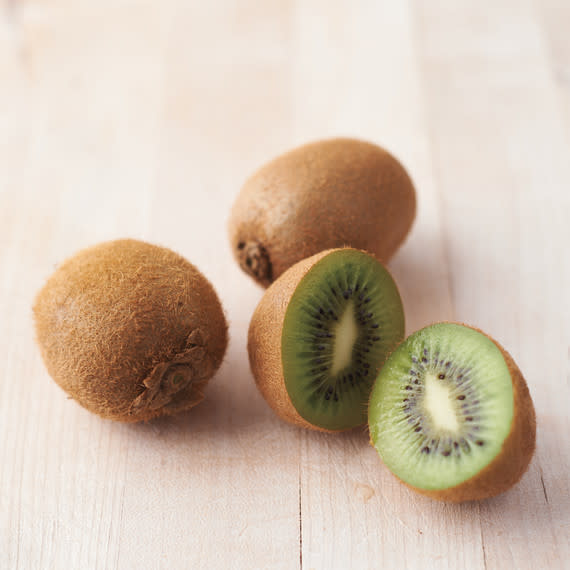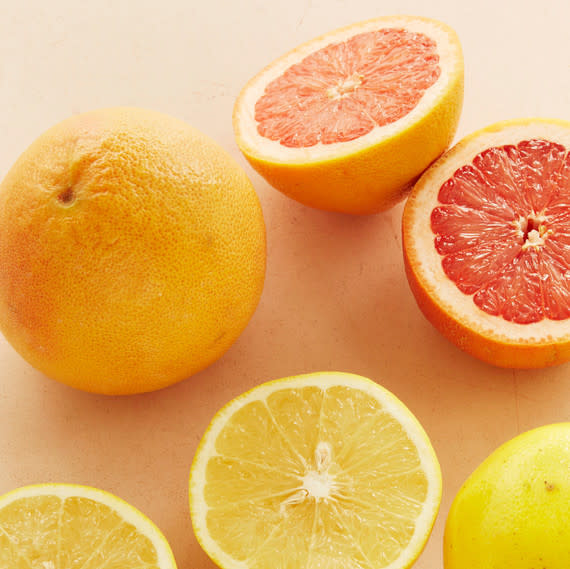Eating the Rainbow: Four Flavorful Fruits That Offer Maximum Health Benefits

Fruit is an essential part of our daily diet; it contains key vitamins and minerals, antioxidants, and fiber. Walking through any market, you will see an array of colors and varieties to tempt you. Here are four fruits that you might think come in one color when actually they are available in a range of shades, all with slightly different flavor profiles. No matter which variety of these colorful fruits you choose, all are chock full of nutrients and fresh and delicious to eat.
Related: Five Divine Desserts You Can Make with Any Summer Fruit
Kiwis
You might only be familiar with the fuzzy brown-skinned kiwi but there are over 60 different species and hundreds of varieties of this easy-going fruit. They can be seeded or seedless, fuzzy or smooth, green, brown, or purple, and have either a green or golden yellow fleshed fruit. Did you know that the fuzzy brown peel (the skin) is also edible? That's right, eating the skin makes this an even more nutrient-dense fruit—it can triple the fiber intake. Plus, when you eat the skin you also preserve more of the Vitamin C content as well! At only 46 calories for a medium-sized fruit, the kiwi is a low-calorie snack that also boasts two grams of fiber. Eat them as is or enjoy kiwifruit with a few almonds sprinkled into cottage cheese for a balanced breakfast or snack.

Pomegranates
A beautiful fruit whose seeds are called arils, the pomegranate has become popular in the U.S. in the last few years. There are about 14 different cultivars (plant varieties) available in the U.S. and hundreds more worldwide. Each variety of pomegranate has its own distinct flavor, ranging from sweet to tart, and in color from yellow-green to dark red. All are full of beneficial antioxidants, vitamins, minerals, and dietary fiber necessary for good health. One cup of arils provides 25 percent of the daily fiber recommendation and has only 100 calories. To maximize the antioxidants, drink pomegranate juice. Because it's whole pressed, the antioxidant polyphenols in the rind, pith, and arils all make it into the juice. Try adding 1/4 cup of pomegranate juice to smoothies to bump up the antioxidant content as well as to brighten their color.

Grapefruit
Known for its tart to semi-sweet flavor, grapefruit comes in several colors; white, pink, red, and golden. And every grapefruit is 75 percent juice, yielding two thirds of a cup of fresh-squeezed juice per fruit. Low in calories and high in nutrients like Vitamin C, grapefruit supports a healthy immune system. Additionally, grapefruit contains two grams of fiber in each medium sized fruit which can help with increasing satiety. Because it is hydrating, grapefruit has been shown to help reduce the incidence of kidney stones. Enjoy grapefruit in a salad with avocado and greens or with honey over ricotta for breakfast or snack.
Related: Healthy Fruit Dessert Recipes

Figs
My love of figs started as a child when I visited my grandparents in the Mediterranean in the summer. They had many fig trees in their garden and I would pick a basketful and bring them in for dessert. Figs can be described by their flavor, pulp, and skin color as either berry, honey, or sugar. Sugar figs tend to have amber/brown pulp, with dark skin of various colors. Honey and agave figs have golden and yellow pulp, with light skin, usually yellow. Berry figs tend to have red pulp sometimes ranging to purple, with dark or light skin. Beyond their delicious taste and texture, figs have numerous benefits. They are known to reduce inflammation. They can also alleviate constipation as they are high in fiber—an ounce of dried figs has three grams of fiber—and this fiber can also keep you feeling fuller longer. Figs are also a good source of calcium which can ward off osteoporosis.

